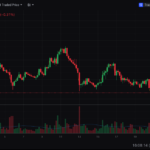On May 31, 2025, China re-entered the crypto spotlight with a full ban—this time outlawing not just mining and trading, but also individual ownership of cryptocurrencies. The move marks the most sweeping anti-crypto action yet from a country that once hosted the largest mining infrastructure in the world.
🧨 Why Did China Do It?
China’s reasoning centers on three main goals:
- Energy Concerns: Crypto mining doesn’t fit with China’s green targets.
- Financial Control: Decentralized assets undermine centralized monetary policy.
- Promotion of the Digital Yuan: By removing competition, China clears the path for its state-backed CBDC.
The underlying motive? Eliminate financial systems the state can’t control.
📉 Immediate Market Fallout
- Bitcoin dropped from $111K to around $104.5K
- Over $750M in long positions were liquidated in one day
- Ethereum, XRP, Solana, and Cardano followed with steep losses
- 10% overall market drop triggered mass panic selling
🌍 Global Reactions: Panic, Hashrate Drop, and Geopolitical Divide
The ban rattled Asian markets most, with traders rushing to exit positions. Bitcoin’s hashrate took a hit as Chinese miners paused operations. Meanwhile, other regions like the U.S. and Latin America are moving in the opposite direction — toward regulated adoption.
This crackdown may widen the gap between authoritarian and decentralized finance philosophies, pushing more Asian users toward crypto-friendly countries.
📈 Long-Term Impact: Should Traders Be Worried?
History tells us: China has tried this before — and the market always recovered. Many analysts argue that this could be a healthy correction after a speculative run-up. Others suggest the ban might slow adoption in parts of Asia, but accelerate decentralization elsewhere.
Interestingly, stablecoins held firm during the turmoil — signaling that capital is rotating, not exiting the ecosystem entirely.
💡 What Can Traders Do?
- Don’t panic sell on headlines.
- Watch what institutions are doing — not just retail.
- Follow BTC, ETH, and stables to spot signs of recovery.
- Stay informed: volatility from policy shifts often creates opportunity.
This is not investment advice. Always conduct your own research and evaluate risks carefully before making financial decisions.







